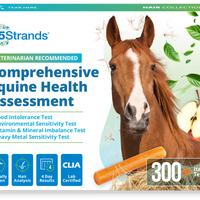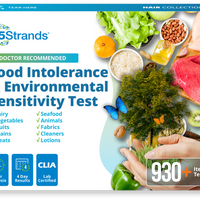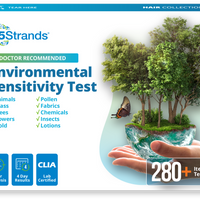People develop intolerances by adversely impacting their digestive enzymes and from acute physical, mental, and emotional responses to one's external stimuli (social and environmental).
Most people are familiar with the common gluten intolerance, but don’t realize that there are many other food and environmental intolerances whose symptoms are usually mistaken for allergies. It’s important to identify the severity of intolerances to specific food and environmental items in order to proactively eliminate these items from your diet (i.e. elimination diet).
Food Intolerances
Food intolerances (also known as food sensitivities) occur when the body has difficulty digesting certain foods, resulting in a range of discomfort symptoms such as bloating, gas, diarrhea, abdominal pain, and skin rash. Many people mistake intolerance symptoms for allergies so it's important to know the difference. Here are some of the possible causes of food intolerances:
- Enzyme deficiencies: Enzymes are needed to break down food in the digestive system. If the body is deficient in certain enzymes, it may have difficulty digesting certain foods. For example, lactose intolerance occurs when the body does not produce enough lactase, the enzyme needed to digest lactose, which is the sugar found in milk.
- Food additives: Certain food additives, such as sulfites, can cause discomfort symptoms in some people. Sulfites are commonly used to preserve dried fruits, wine, and other foods.
- Histamine intolerance: Histamine is a natural substance produced by the body and found in many foods. Some people may have a histamine intolerance, which occurs when the body cannot break down histamine properly, leading to symptoms such as hives, headaches, and stomach problems.
- Gut microbiome imbalances: The gut microbiome plays an important role in digesting food and maintaining overall health. An imbalance in the gut microbiome can lead to food intolerances, as certain types of bacteria can produce gas and other substances that cause digestive symptoms.
- Food allergies: Food allergies are a type of immune response to a specific protein in food. Unlike food intolerances, which are caused by difficulties digesting certain foods, food allergies can cause severe reactions that can be life-threatening. It's important to know why food allergies and sensitivities are different.
If you believe you, a loved one, or your pet (cat or dog) has food intolerances, then you can find the best at home collection food intolerance tests on 5Strands.com or Amazon.com.
Environmental Intolerances
Environmental intolerances are often mistaken for allergies as the symptoms can be very similar. An allergy is the body’s abnormal response to a foreign body (antigen), causing an immediate and sometimes life-threatening reaction (antibody production). Intolerances on the other hand, develop over a longer period of time and do not involve the immune system. Rather, they are a result of certain incompatibilities to specific factors in your external environment that lead to the development of sensitivities. In some cases, they may cause even more serious reactions that may require medical intervention.
Environmental intolerances can be defined as acute physical, mental, and emotional responses to one's external stimuli (environmental and social). A person may experience fatigue, headaches, dizziness, nausea, skin irritations, and breathing difficulties as a result of overexposure to various environmental factors such as chemicals, electromagnetic fields, and certain foods or medications. These symptoms can range from mild to severe and most often affects the individual’s daily function and lifestyle. The exact impact of an environmental intolerance on your health will depend on the severity and frequency of your symptoms.
Here are some of the possible factors that may contribute to the development of environmental intolerances:
- Genetic susceptibility: Some people may have a genetic predisposition to environmental intolerances, which may be related to differences in immune system function or detoxification processes.
- Exposure to environmental toxins: Overexposure to chemicals, pollutants, and other environmental toxins can cause damage to the body and trigger symptoms. These toxins can be found in the air we breathe, the water we drink, the food we eat, and materials we touch.
- Chronic stress: Chronic stress can weaken the immune system and make the body more susceptible to environmental triggers.
- Infections and illnesses: Certain infections or illnesses can damage the body's immune system or create a state of chronic inflammation, which may increase the risk of developing environmental intolerances.
- Trauma or emotional stress: Trauma or emotional stress can also have a negative impact on the immune system and may increase the risk of developing environmental intolerances.
It's important to note that environmental intolerances are a complex and poorly understood condition, and further research is needed to fully understand the causes and mechanisms involved. If you suspect that you may have an environmental intolerance, it's important to speak with a healthcare professional for diagnosis and treatment.
Overall, food and environmental intolerances are constantly changing, which is why it's important to test yourself and your family on an annual basis.



























